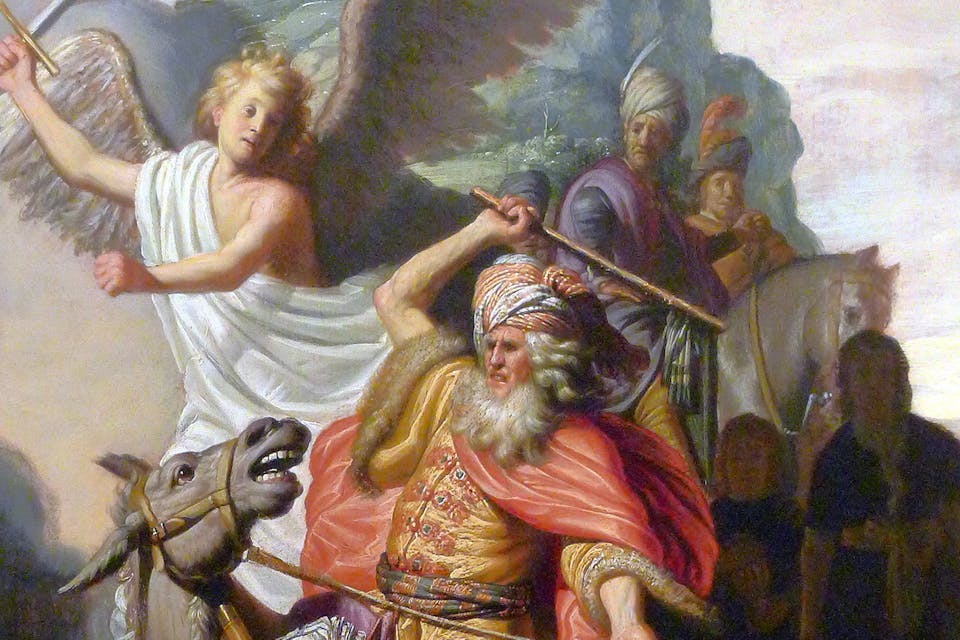
June 28, 2018
Rembrandt and the One Gentile Prophet in the Hebrew Bible
How does the great painter render the tale of Balaam and the ass?
This is the fourth in an occasional series of essays by Rabbi Meir Soloveichik on the intersection of Jews and Judaism with the artistic practice, and the aesthetic vision, of the great 17th-century Dutch master Rembrandt van Rijn. To see the earlier installments, click here.
In 1625, a nineteen-year-old aspiring artist journeyed from Leiden to Amsterdam where he apprenticed himself to Pieter Lastman, the premier Dutch painter of his time. Lastman was known as a “history painter”—the history being primarily biblical—and the young man, whose name was Rembrandt van Rijn, aspired to follow in Lastman’s footsteps.
Immediately following his six-month apprenticeship to Lastman, who surely had no idea that he would one day be entirely eclipsed by his student, Rembrandt created a work known today as Balaam and the Ass. It presents Rembrandt’s version of the famous tale that is the centerpiece of this week’s Torah reading from the book of Numbers (22:2-25:9). On a potentially lucrative mission to pronounce curses upon the people of Israel, Balaam, a Gentile prophet hired by Balak, the king of the Moabites, is brought up short by his unusually eloquent animal: